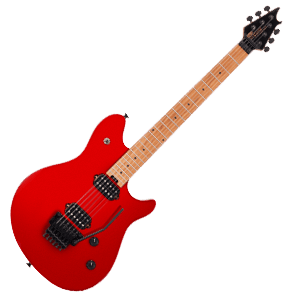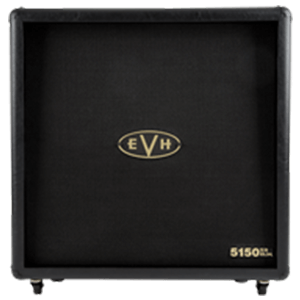EVH 5150III heads and cabinets deliver the sound—the incredible tones Eddie Van Halen has chased his whole life. It’s a triple-threat monster: a truly clean channel, a molten crunch-time channel and an off-the-scale overdrive channel you’re simply not gonna believe. In black and ivory, with an unmistakable look and sound that’s pure EVH.
Indeed, a central part of Ed’s entire amazing history is that no off-the-shelf guitar or amp rig could deliver the sounds he envisioned during those ’70s formative years, so he was always tinkering incessantly with his gear. His amps always wound up being “Van Halen-ized” in some way or another as Eddie dug into them, changing this and adjusting that, pursuing previously unheard sounds that would soon propel him to rock greatness. Van Halen expected as much from his amps as he did from his hands and his guitars, and he pushed them hard to get what he wanted. As he himself put it:
“I was the only one back then who would just take everything on the amp and turn it full-blast up. And between songs, I would walk back to the amp and go, ‘Why won’t it go up any further?’ I’ve been pretty much known to push everything past the limit, then back it off a little bit, you know? It’s kind of like a finely tuned racecar—they push everything to the limit. It’s gotta scream.”
Eddie was constantly experimenting with the electronic guts of his amps; for example, famously adjusting the transformers to lower the voltage because he liked the effect it had on the sound. No facet of his amplification escaped his attention or curiosity, right down to the effect that his amp’s grille cloth had on high frequencies:
“In the old club days, I used to take that stuff you tack on the wall in the recording studio—that egg carton foam stuff—I used to have a slab of that and I’d duct-tape it to the from of my cabinet because I felt bad for the people sitting right down front sipping there little Mai Tai, or whatever the hell, with the cabinet three feet away from their heads. I was kind to them.”
The man knew tone from a very young age, and he delighted in confounding expectations and breaking rules as he and his swaggeringly ambitious band began their ascent in L.A.’s mid-’70s club scene. He “played” his amps just like he played his guitars, and he used his amps in ways that “you weren’t supposed to” according to everybody else. To hear Ed tell it, it wasn’t even all that complicated:
“I remember when we played clubs—I had that approach to my playing since about ’74 with the old amps I used to use—people would tell me ‘You can’t use them like that!’ I’d go ‘Really? Watch this!’ There were little tricks that I did to keep it from blowing. All kinds of guitarists used to keep on coming; snooping around; seeing what the hell I was doing, but it was pretty basic, really—just turn it all the way up.”
With the 1978 release of debut album Van Halen, Eddie’s name became a household word, of course, especially in households containing aspiring guitarists. Van Halen embarked on an incredible hit-making, decade-spanning career, always remaining firmly in the upper echelons of rock success. Eddie continued to chase the sounds he was always after, including various amp projects, but it wasn’t until now that an amp truly worthy of his name has been offered—the 5150III.










